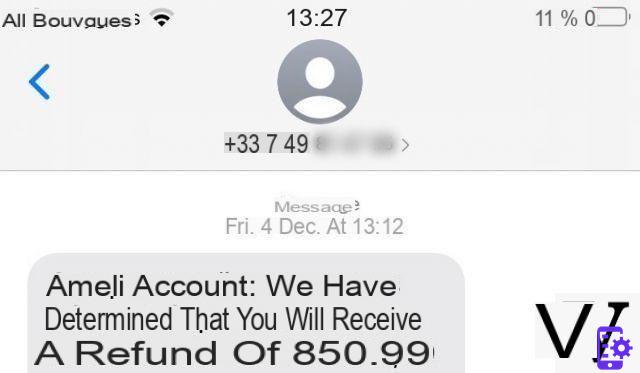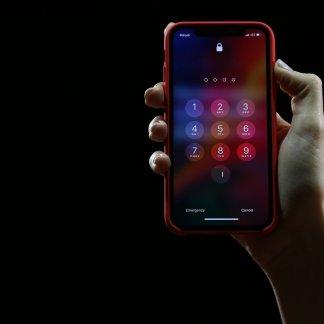Ameli, La Poste, your bank… Portrait of a fake SMS
In order not to fall into the trap of fraudulent SMS, it is still necessary to know what their content generally looks like. In the vast majority of cases, they deliver apparently very important - even urgent - information accompanied by a link. Here are some examples of what a malicious message can claim (non-exhaustive list):
- the flow of a package to your attention is interrupted;
- Health Insurance (via your Ameli account) reimburses you a large sum of money;
- a transfer has been made or blocked from your bank account;
- taxes are taking more money from you than you expect.
So many alerts that can appeal to a person. The goal is to make sure that the latter rushes and clicks on the link present in the SMS which supposedly allows to make a complaint, to confirm or to cancel such or such financial transaction.

Always pay attention to the links in the SMS // Source:
So always cultivate the culture of doubt as soon as the message you receive amazes you. Assume that if you had not planned to receive a package or make large financial movements in your bank account, the message telling you the opposite is probably a scam.
You may be wrong, but you just need the few good reflexes that we will detail below to verify it. In the worst case, by not rushing to the link in the SMS, you will lose five minutes; in the best case, you will protect yourself against a hacking attempt.
Check the sender number
This is the very first thing to do when you receive a suspicious message: check the sender number. If it is a mobile number, this should alert you immediately. Indeed, your bank, your mutual, Ameli or La Poste will never send you an official message by simply displaying a sequence of numbers starting with 06 or 07.
The sender of a legitimate message allowing you to track a package, validate or cancel a bank transfer displays his name in full or a fairly short number of five digits generally. To go further, when you are in doubt, do a little research on Google by copying the phone number that sent you the message, putting it in quotes.

A legitimate business or organization probably won't text you from a regular cell phone number // Source:
In this way, the search engine will scan the web to find exactly this series of numbers and in many cases you will come across forums where Internet users share or note their negative experiences. Then you will know that you should not give credit to the message you have received.
Test the link without putting yourself in danger
As we have said, fraudulent text messages usually contain a link. In the vast majority of cases, if you click on it, you will find yourself on an interface asking you to enter your bank details. The link is malicious and, to avoid any risk, it is best not to open it.
To learn more
The 4 best free and paid password managers
However, if you are in doubt, you can test the legitimacy of any link without having to click on it. Several services offer you to know if a site is shady without you having to go to it. You just have to copy and paste the address of the link (without opening it again) or copy the URL by hand on one of the following platforms:
- Ushorten (to see what's behind a Bitly link)
- urlscan.io (for full tracing)
- VirusTotal
If the domain name scanned by these services seems suspicious, go your way by ignoring the message.
Copy the message to Google
Google is your friend. While this expression shouldn't be taken literally, remember that many people must have received a message the same or similar to yours and have probably complained about it on the web.
By simply copying the text contained in the suspicious SMS on a search engine - Google or otherwise - there is a good chance that you will find results proving the fraudulent nature of the message.
 How to secure your smartphone, tablet or PC? The ultimate guide!
How to secure your smartphone, tablet or PC? The ultimate guide!


Let's not lie to ourselves, few of us have the right safety reflexes. However, our smartphones, tablets and PCs house a great deal of private data. So you surely have an interest in following these ...
Read more

To follow us, we invite you to download our Android and iOS application. You will be able to read our articles, files, and watch our latest YouTube videos.


























